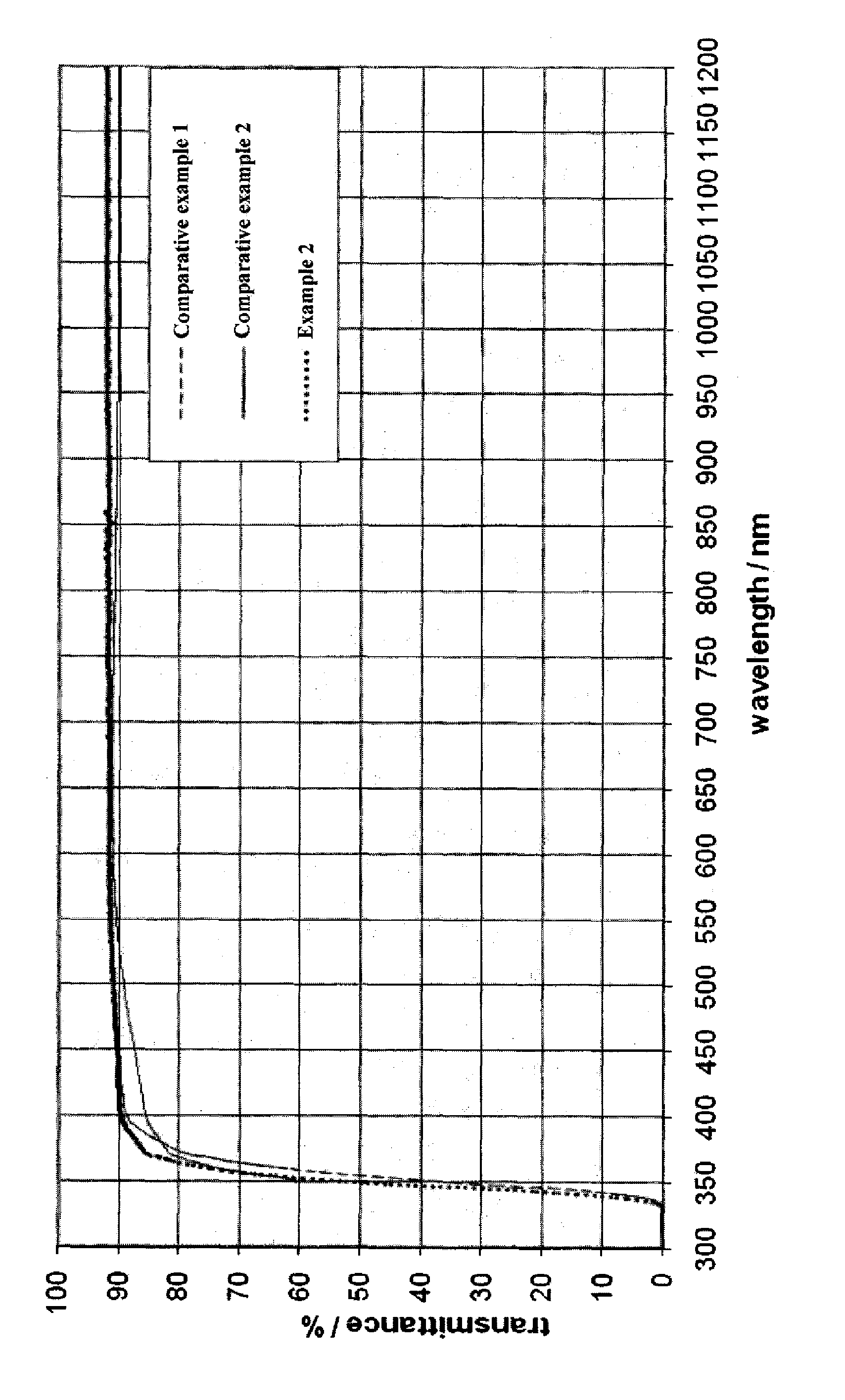Arsenic and antimony free, titanium oxide containing borosilicate glass and methods for the production thereof
a technology of titanium oxide and borosilicate glass, which is applied in the field of titanium oxide containing borosilicate glasses, can solve the problems of high toxicity and environmental harmfulness of arsenic and antimony compounds, prone to discoloration, and limited use of them
- Summary
- Abstract
- Description
- Claims
- Application Information
AI Technical Summary
Benefits of technology
Problems solved by technology
Method used
Image
Examples
example 1
According to the Present Disclosure
[0072]A glass having the below mentioned composition was prepared by heating a mixture of the raw materials of the glass to about 1450° C. and subsequently keeping it at 1500° C. for about four hours. As a refining agent sodium selenite in combination with sulfate was used. Prior to steps of cooling and subsequent shaping the glass melt the glass was subjected to a homogenization step. The sand used had a proportion of 70 ppm Fe2O3 which was contained therein as an impurity. The glass obtained in this manner had with regard to its main components (undesirable impurities not considered) the following composition, in % by weight, based on the total amount of the glass: SiO2 64.1; B2O3 8.36; Al2O3 4.18; Na2O 6.32; K2O 6.85; ZnO 5.38; TiO2 4.18; and SeO2 0.025.
[0073]The glass was completely colorless. With the naked eye in comparison to the glass which had the composition of comparative example 1 and had been subjected to the refining process described...
PUM
| Property | Measurement | Unit |
|---|---|---|
| Temperature | aaaaa | aaaaa |
| Melting point | aaaaa | aaaaa |
| Transmittivity | aaaaa | aaaaa |
Abstract
Description
Claims
Application Information
 Login to View More
Login to View More - R&D
- Intellectual Property
- Life Sciences
- Materials
- Tech Scout
- Unparalleled Data Quality
- Higher Quality Content
- 60% Fewer Hallucinations
Browse by: Latest US Patents, China's latest patents, Technical Efficacy Thesaurus, Application Domain, Technology Topic, Popular Technical Reports.
© 2025 PatSnap. All rights reserved.Legal|Privacy policy|Modern Slavery Act Transparency Statement|Sitemap|About US| Contact US: help@patsnap.com

